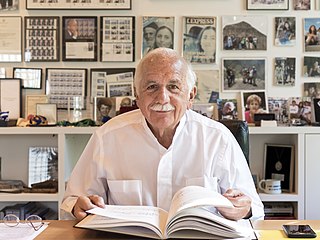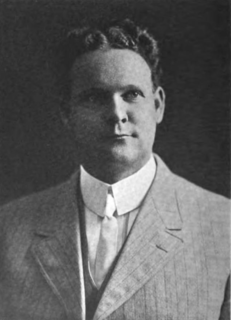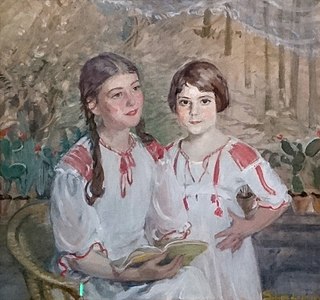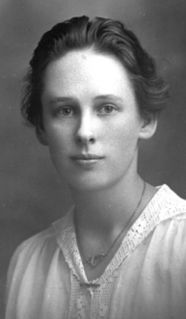Related Research Articles

Moshe Safdie is an architect, urban planner, educator, theorist, and author who claims Israeli, Canadian and American citizenship. Over a 50-year career, Safdie has explored the essential principles of socially responsible design through a comprehensive and humane design philosophy. Safdie is an important architect of the second half of the twentieth and early twenty-first century because of his multiculturalism, commitment to geographic, social and cultural elements that define a place, and constant search for typological and technological innovation. Safdie's projects include cultural, educational, and civic institutions; neighborhoods and public parks; housing; mixed-use urban centers; airports; and master plans for both existing communities and entirely new cities. Safdie has had projects in North and South America, the Middle East, and throughout Asia. He is most identified with designing Marina Bay Sands and Jewel Changi Airport, as well as his debut project, Habitat 67, originally conceived as his thesis at McGill University. This led to his international career. Safdie is considered a thought leader and his exemplary projects have inspired generations of architects and architecture.

George Allen Ross was a Canadian architect, for many years senior partner in the important Montreal firm of Ross and Macdonald.
Ross and Macdonald was one of Canada's most notable architecture firms in the early 20th century. Based in Montreal, Quebec, the firm originally operated as a partnership between George Allen Ross and David MacFarlane from 1907 to 1912. MacFarlane withdrew from the firm in 1912, and Robert Henry Macdonald became a partner.

Cornelia Hahn Oberlander was a German-born Canadian landscape architect. Her firm, Cornelia Hahn Oberlander Landscape Architects, was founded in 1953, when she moved to Vancouver.

William Sutherland Maxwell was a well-known Canadian architect and a Hand of the Cause in the Baháʼí Faith. He was born in Montreal, Quebec, Canada to parents Edward John Maxwell and Johan MacBean.

The Royal Architectural Institute of Canada (RAIC) is a not-for-profit, national organization that has represented architects and architecture for over 100 years, in existence since 1907. The RAIC is the leading voice for excellence in the built environment in Canada, demonstrating how design enhances the quality of life, while addressing important issues of society through responsible architecture. The RAIC’s mission is to promote excellence in the built environment and to advocate for responsible architecture. The organization national office is based in Ottawa with a growing federated chapter model. Current chapters and networks are based in British Columbia, Alberta and Nova Scotia.
Hazen E. Sise (1906–1974) was a Canadian architect, educator, and humanitarian.

Esther Marjorie Hill was a Canadian architect and the first woman to graduate in architecture from the University of Toronto (1920).

Women in architecture have been documented for many centuries, as professional practitioners, educators and clients. Since architecture became organized as a profession in 1857, the number of women in architecture has been low. At the end of the 19th century, starting in Finland, certain schools of architecture in Europe began to admit women to their programmes of study. In 1980 M. Rosaria Piomelli, born in Italy, became the first woman to hold a deanship of any school of architecture in the United States, as Dean of the City College of New York School of Architecture. However, only in recent years have women begun to achieve wider recognition with several outstanding participants including five Pritzker prizewinners since the turn of the millennium.
Arcop was an architectural firm based in Montreal, renowned for designing many major projects in Canada including Place Bonaventure, Place Ville-Marie and Maison Alcan. The firm was originally formed as a partnership under the name Affleck, Desbarats, Lebensold, Michaud & Sise between Ray Affleck, Guy Desbarats, Jean Michaud, Fred Lebensold and Hazen Sise, all graduates and/or professors at the McGill School of Architecture. In 1959, after the departure of Michaud and the addition of Dimitri Dimakopoulos, another McGill Architecture graduate, the firm was renamed Affleck, Desbarats, Dimakopoulos, Lebensold, Sise which it maintained for a decade afterward. The company did not adopt the name Arcop, which stands for "Architects in Co-Partnership", until 1970.

Annmarie Adams is an architectural historian and university professor. She is the former Chair of the Department of Social Studies of Medicine and is the former Director of the School of Architecture at McGill University. Adams specializes in healthcare architecture and gendered space. At McGill she teaches courses in architectural history and research methods. She is the inaugural holder of the Stevenson Chair in the History and Philosophy of Science, including Medicine. She is a board member of the Society of Architectural Historians and former board member of the Vernacular Architecture Forum.
Janet Leys Shaw Mactavish was a Canadian architect notable for her innovative design of schools and university buildings. Among her noteworthy works are two circular university buildings: Stirling Hall, the physics building at Queen's University in Ontario (1962); and the McIntyre Medical Sciences Building at McGill University in Montreal, Quebec (1965). She was a graduate of McGill University's School of Architecture.
Marianne McKenna is a Canadian architect and a founding partner of KPMB Architects, a Toronto-based practice established in 1987. She is an invested Officer of The Order of Canada "for her contributions as an architect, designing structures that enrich the public realm". Her projects include the renovation and expansion of The Royal Conservatory TELUS Centre for Performance and Learning and Koerner Hall. McKenna and KPMB were selected by The Brearley School, an independent all-girls school located in New York City, to lead the renovation of its building located on the Upper East Side. Her current projects also include for Banff Centre for Arts and Creativity in Banff, Alberta and an expansion and renovation of historic Massey Hall in Toronto In 2010 she was named one of Canada’s Top 100 Most Powerful Women and in 2014 she was named one of Toronto’s top 50 Powerful People by MacLean’s Magazine.

Blanche Lemco van Ginkel is a Canadian architect, city planner and educator who worked mostly in Montreal and Toronto. She is known for her Modernist designs, as well as for planning Expo 67 and spearheading the preservation of Old Montreal. Lemco van Ginkel is the first woman to head a faculty of architecture in Canada and be elected a member of the Royal Canadian Academy of Arts. She is also the first woman to be awarded a fellowship by the Royal Architectural Institute of Canada and in 2020, was awarded their highest honour, the RAIC Gold Medal.
Catherine Mary Wisnicki was a Canadian architect, planner and educator. She was the first woman to graduate from the McGill University School of Architecture. Her professional career was spent largely in Vancouver, where she was a senior designer with the firm Sharp, Thompson, Berwick, Pratt. She taught at the University of British Columbia school of architecture.
Eva Hollo Vecsei is a Hungarian-Canadian architect. She began her career in Budapest and emigrated to Montreal in 1957, where she established Vecsei Architects with her husband in 1984.

The McGill School of Architecture is one of eight academic units constituting the Faculty of Engineering at McGill University in Montreal, Quebec, Canada. Founded in 1896 by Sir William Macdonald, it is among the oldest architecture schools in North America, offering accredited professional and post-professional programs ranging from undergraduate to PhD levels. Since its founding, the School has established an international reputation and a record of producing leading professionals and researchers who have helped shape the field of architecture, including Moshe Safdie, Arthur Erickson, Raymond Moriyama and the founders of Arcop.
Christina Poznanska Perks, OAA, FRAIC is a Canadian architect known for her contributions to the public sector by managing the design and construction of Canadian Embassies. Throughout her career she has been an advocate for women's rights in the architecture industry. In celebration of the first woman president of the OAA Perks responded with "...Ms. Kirkland has moved from the usual reported role of woman as victim to an active shaper of the future environment. Hurrah!" She currently resides in Toronto, Ontario.
John Bland was a Canadian architect and educator. He played a fundamental role in transforming architectural education in Canada, spending more than five decades teaching at the McGill School of Architecture including a 31-year tenure as director, under which Bland transformed the School from a Beaux-Arts institution into one based on contemporary design principles. He also introduced the first Canadian graduate programs in Architecture. Many important individuals in architecture learned under Bland, including Arthur Erickson and Moshe Safdie, as well as the heads of architecture schools in at least six countries. In addition to his teaching career, Bland was a practicing architect, working alongside Harold Spence-Sales prior to joining McGill and collaborating with many Montreal architects on other projects throughout his tenure. He was the president of the Province of Quebec Association of Architects in 1953, and served on the Council from 1942 to 1954. He was also a member of the Council of the Royal Architectural Institute of Canada (RAIC) from 1950 to 1954, and was elected to the RAIC College of Fellows in 1954 and the Royal Canadian Academy of Arts (RCA) in 1967.
Philip John Turner was an architect and educator from Stowmarket, Suffolk. After emigrating to Canada in 1906, he began a private architectural practice in Montreal, and in 1910 became a lecturer at the McGill School of Architecture, where he would teach for more than three decades. He became the director of the School in 1939 and opened the door to co-ed education while also fighting the threat of the School's closing due to low enrollment after the Great Depression and amidst World War II.
References
- 1 2 Adams, Annmarie; Tancred, Peta (2000). 'Designing Women': Gender and the Architectural Profession. pp. 84–88. ISBN 144265421X.
- 1 2 3 "Walford, Dorice Constance Brown". Canadian Women Artists History Initiative.
- ↑ "Dorice Walford". McGill University.
- 1 2 "Montreal's Designing Women". Canada's History.